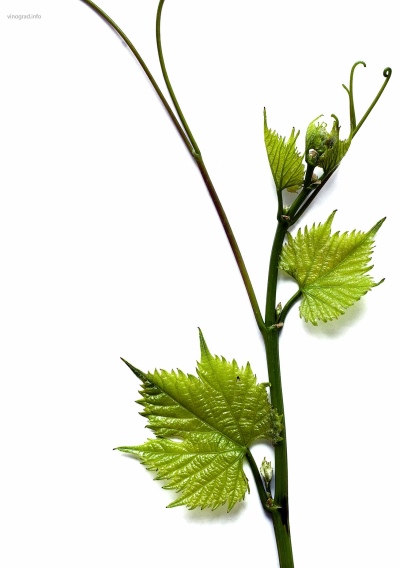
- Authors: France
- Appointment: technical
- Berry color: blue
- Ripening period: very early
- Frost resistance, ° C: -29
- Name synonyms: Kuhlman 1882, Foch
- Flower type: bisexual
- Appeared when crossing: (Riparia x Rupestris 101-14) x Goldriesling, according to other sources - Oberlin 595 x Goldriesling
- Berry shape: rounded
- The power of growth: low-medium height
Marshal Foch, a technical hybrid grape, is highly prized in the winemaking environment. It is believed that it gives the wine a "burgundy" character. This requires improving the quality of the wine by hot pressing or carbon dioxide maceration. Also grapes are sometimes referred to as Foch or Kuhlman 1882.
Breeding history
The hybrid was bred in France in the 1920s by a breeder named Eugene Kuhlman. The work was carried out in Alsace, on the basis of the Oberlin Institute. When crossing, according to some sources, (Riparia x Rupestris 101-14) x Goldrisling were used, according to others - Oberlin 595 x Goldrisling. The hybrid form received its modern name after it spread in the United States, approximately after 1946.
Description
Weak to medium-sized grape hybrid with good vitality. Prone to copious education of stepchildren. Leaves are medium-sized, whole, slightly pubescent below.
Ripening period
A very early hybrid. Reaches technical maturity in the 1st decade of September. The average ripening period is 105-115 days.
Bunches
The brushes are characterized by a simple conical shape. The average weight reaches 100–120 g, when normalized to 200 g.
Berries
The fruits are deep blue in color, round in shape, and small in size. The berry juice is highly colored. The peel is inedible, with a prune bloom; there is a bone inside the fruit. The acidity is 9–11 g / l with a sugar content of 21–23%.
Taste
Technical grapes are not intended for fresh consumption. The taste is neutral, not pronounced.
Yield
Marshal Foch grapes are characterized by average yields. To increase it, it is recommended to increase the number of eyes on the bush, followed by the removal of sterile vines.


Growing features
Cultivation of shoots on sandy soils is recommended; on heavy soil, the use of vigorous rootstocks is required. For cultivation in a self-rooted culture, it is recommended to purchase seedlings in containers from trusted sources. The hybrid does not tolerate extreme heat, it should be shaded, placed when planting near walls or other structures that protect from the wind.
Landing
Spring planting is recommended. In this case, the vine shows active growth, rooting is going well. The preparation consists in increasing the fertility of the soil by introducing gummed garden soil or chernozem.It will be useful to saturate the soil with organic and mineral fertilizers, compost.

Pollination
Bisexual flowers allow Marshal Foch grapes to be classified as self-pollinated. It does not need additional attention during the flowering period.
Pruning
Marshal Foch is a low-growing grape, so he does not need strong pruning. But it abundantly forms side shoots, which must be removed in a timely manner. This pruning will help reduce the risk of fungal infections in the vine.
At 1 and 2 years of age, you do not need to shorten the shoots. The first pruning is carried out in the fall, on the plants for 3 years of cultivation. 55–65 eyes are left on the bush. The next spring, the shoots break off.



Frost resistance and the need for shelter
Marshal Foch belongs to the fairly winter-hardy hybrids. The bushes can withstand frosts down to -29 °. It is better to cultivate it in a semi-covering culture, bend it to the ground for the winter and fix it.

Diseases and pests
The hybrid showed resistance to mildew and oidium (estimated at 2 points). Marshal Foch is highly attractive to birds, the use of nets or other deterrent is recommended. Also, berries can be damaged by wasps. Among ground pests, the scoop and the beetle are dangerous.

If a grape is exposed to any disease or insect, this always affects its appearance.
Storage
Not intended for long-term storage. On vines, brushes can be left in dry weather. In high humidity, Marshal Foch is prone to cracking.
Review overview
According to amateur winegrowers, the hybrid is well suited for growing in regions with winter temperatures dropping to below -30 °. It is noted that the growth is obtained slowly, no more than 30 cm per year. In addition, the owners are disappointed by the very low weight of the signal bunches: about 50-60 g. But Marshal Foch is praised for the sugar content, noting full compliance with the expectations for this indicator.
The positive aspects include the ability of a three-year-old bush to carry up to 3-4 bunches with a total weight of up to 1 kg. The owners note that it is better to ration grapes in northern latitudes: from Karelia to Northern Europe. The ripening dates, according to reviews, correspond to those stated.











































































